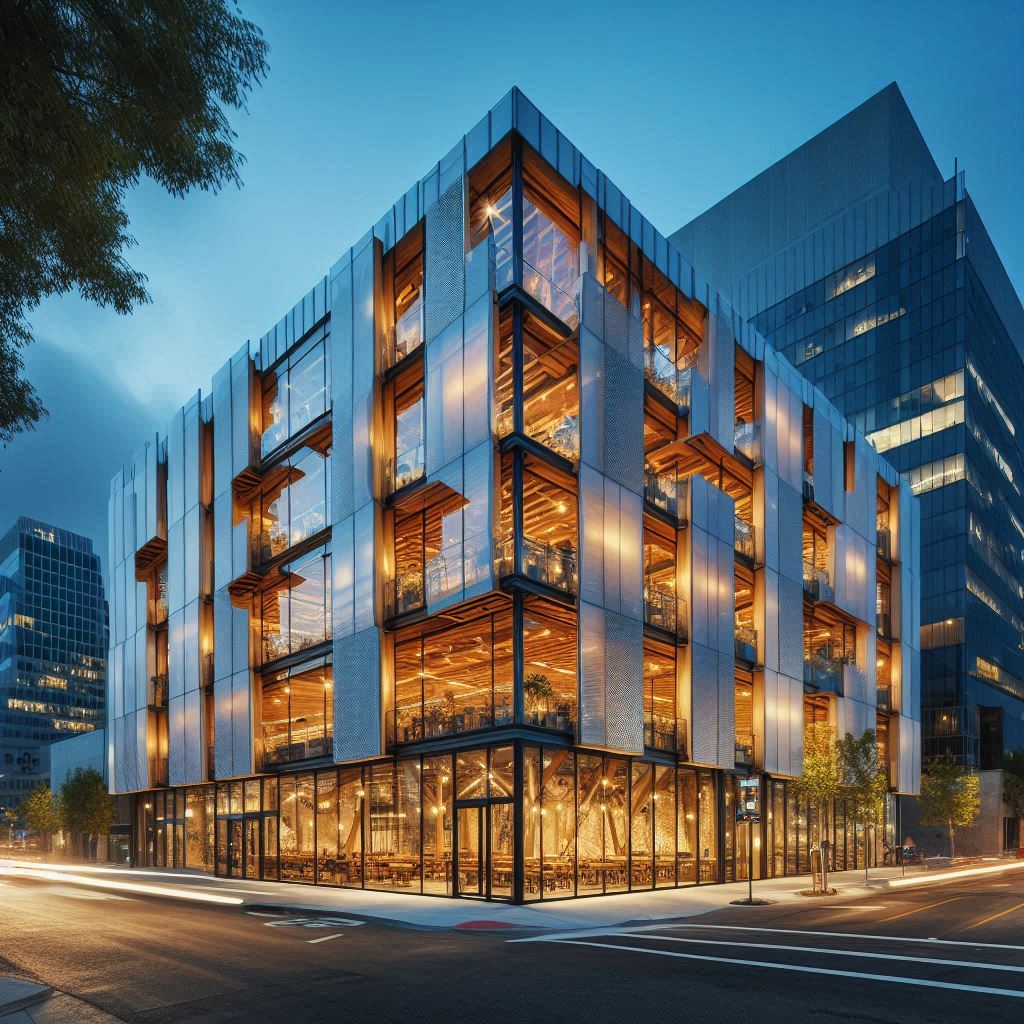In the realm of modern architecture and building design, sustainability has taken center stage. As global awareness of environmental issues like climate change increases, the construction and real estate industries are shifting towards greener, more sustainable practices. A key player in this transformation is the Net Zero Energy Building (NZEB). These buildings not only aim to reduce greenhouse gas emissions but also present a compelling case for sustainability being a wise investment rather than just an added expense. This detailed analysis explores the intrinsic value of Net Zero Energy Buildings, assessing their economic and environmental impacts and positioning them as pivotal in the sustainable development landscape.
Understanding Net Zero Energy Buildings

A Net Zero Energy Building is defined as a building that produces as much renewable energy as it consumes over the course of a year. This balance between energy consumption and energy production is achieved through a combination of high-efficiency operations and renewable energy generation, typically from solar or wind sources. Adhering to Net Zero Building standards, these structures are at the forefront of architectural innovation, pushing the envelope for energy efficiency and renewable energy integration in the built environment.
The concept revolves not just around energy efficiency but also energy production, setting a rigorous standard that challenges conventional building practices and encourages a shift towards more sustainable development methodologies.
Economic Analysis of Net Zero Energy Buildings
Initial Investment versus Long-Term Returns
The economics of constructing a Net Zero Energy Building are often viewed through the lens of initial cost versus long-term savings. It is true that integrating cutting-edge technologies for energy efficiency and renewable energy generation can significantly increase upfront costs. These technologies might include advanced insulation, high-efficiency HVAC systems, solar panels, and energy management systems that contribute to the higher initial expenditure.
However, the narrative shifts considerably when considering the long-term financial benefits. Net Zero Energy Buildings typically incur much lower utility costs as they consume less energy and generate their own power. These savings on energy expenses can be substantial, often offsetting the initial higher investment over time.
For instance, a report by the National Renewable Energy Laboratory (NREL) highlights that the lifecycle cost-benefit analysis of NZEBs shows that the additional upfront costs can be recovered through energy savings within a reasonable period, substantiating the investment appeal of these buildings.
Property Value Enhancement
Another economic advantage of Net Zero Energy Buildings is their potential to command higher market values. The growing demand for sustainable, energy-efficient buildings among eco-conscious buyers and tenants is palpable. Buildings that meet these criteria are often able to attract a premium in both sales and rental markets.
Evidence supporting this trend can be found in studies such as those conducted by real estate firms like CBRE, which indicate that properties with green certification, including NZEBs, achieve higher rental rates and increased property values, making them not only environmentally sound but also economically advantageous investments.
Environmental Benefits of Net Zero Energy Buildings
Drastic Reduction in Carbon Emissions
The primary environmental benefit of Net Zero Energy Buildings is their capacity to significantly reduce carbon emissions. By utilizing renewable energy sources and operating with high energy efficiency, NZEBs minimize the reliance on fossil fuel-based energy sources, thereby reducing the building’s carbon footprint. This substantial decrease in emissions is crucial for meeting global carbon reduction targets and combating the broader impacts of climate change.
Positive Contributions to the Energy Grid
Net Zero Energy Buildings can also enhance the resilience and stability of the local energy grid. During periods when these buildings generate more energy than they consume, the surplus energy can be fed back into the grid. This not only provides a buffer that helps stabilize the grid during peak demand times but also promotes a wider adoption of renewable energy in the community, contributing to an overall reduction in energy-related emissions.
Challenges to Widespread Adoption

Despite their benefits, the widespread adoption of Net Zero Energy Buildings faces several challenges. These include the availability of advanced technologies, the need for specialized skills in sustainable construction, and the variability in renewable energy generation due to climatic conditions. Additionally, there is often a lack of supportive regulatory frameworks that are essential for encouraging the construction and operation of NZEBs.
For instance, integrating comprehensive building codes that mandate or incentivize net zero construction can accelerate the adoption of NZEBs. Policymakers play a critical role in this context by crafting regulations that facilitate rather than hinder the development of sustainable buildings.
Looking to the Future
The trajectory of sustainable building practices seems promising, with increasing technological advancements and growing environmental awareness. Initiatives and policies at both governmental and corporate levels are beginning to reflect a commitment to sustainable development, with entities like the European Union setting ambitious targets to reduce building carbon emissions significantly by 2050.
Conclusion
Net Zero Energy Buildings represent a paradigm shift in how we conceive of and construct our living and working spaces. Far from being mere expenses, they are sound investments that offer substantial economic returns through energy savings and increased property values, alongside profound environmental benefits like reduced carbon emissions and enhanced grid stability. As our global society continues to grapple with the pressing need for sustainability, the role of NZEBs will undoubtedly become more central, reshaping the landscape of the construction and real estate industries towards a more sustainable and economically viable future.
VertPro.com serves as a resourceful platform for property owners and managers seeking to enhance their buildings’ energy efficiency. The site offers a range of services, including Commercial Energy Audits, Benchmark Compliance consultancy, and a Construction Marketplace. At the heart of VertPro® is a suite of SaaS technology-based solutions designed to assist in navigating the complexities of Energy Benchmarking and Energy Audits/RCx Plus, while ensuring adherence to over 60 Energy Benchmarking and Energy Efficiency Laws across the country.
For those looking to improve their property’s energy usage and operational value, VertPro.com provides a diverse array of tools and information. The site aims to facilitate a better understanding of energy efficiency practices and legislation, helping building owners and property managers make informed decisions about their energy strategies while complying with all energy ordinances and laws.

